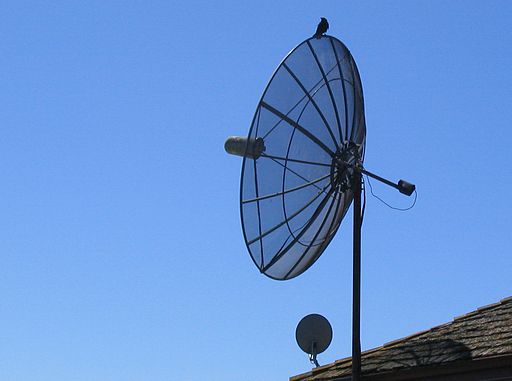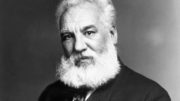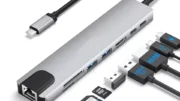Two generations ago, giant satellite dishes roamed the earth. And, believe it or not, people were excited about it. In the mid-1980s, consumers could spend about $2,000 for a satellite dish, put it up themselves, and get a lot of free TV. This was about as tech-forward as you could get back then.
Today, when you say satellite TV, at least in the US, you’re talking about DIRECTV and DISH. Other competitors have come and gone, while these two titans just keep dominating. Despite some subscriber losses, they’re still among the top entertainment providers in the country. But, obviously, they’re not free. Is anything free anymore?
The C-Band dish used to rule
A long time ago, satellite broadcasting took place on the “C-Band,” the range between 4 and 8GHz. When the first generation of communications satellite started working, that was about the highest possible frequency. Originally, all satellite broadcasting was completely open. Anyone could receive it. Realistically, the only customers until the mid-1980s were television stations and cable companies. No one else had the money or the technical expertise to get it done.
When consumer satellite TV came out, it was possible, all of a sudden, to get free and open feeds of just about everything. You just needed a 10-foot-wide dish and a view of the sky. You could watch network shows during their East Coast broadcasts, no matter where you were. Believe it or not you could watch premium channels without paying for them. It was all open to you. Of course, this was not the money saver or the time saver that was promised. After shelling out tons of money for the equipment, it still needed maintenance that you couldn’t do yourself. You needed to figure out where to find all this programming. This was before the internet so you ended up paying for printed directories which changed all the time.
But still, it was a super high-tech way of getting TV and it was seen as insanely cool.
We all know where this is going
C-Band programs were encrypted pretty quickly, and the rise of companies like DIRECTV and DISH in the early 1990s meant that people lost interest in the “big ugly dish.” It was too hard to deal with. People preferred the simplicity and size of subscription satellite. But, for about 15 years, C-Band satellite still provided a service. There were hundreds of channels that people really wanted. Often these were international channels. Sometimes they had other special markets in mind.
With the rise of high-speed internet, though, interest in C-Band satellite started dropping, fast. It’s still out there, but practically everyone has moved to streaming the content they used to get for free using a satellite.
Is there any content left?
I’ll say, there’s a little. If you still have the equipment, you can find a little bit here or there. But, it’s shrinking. High-speed internet is the way to go. Unfortunately this has meant that rural customers have been left behind, again. Many internet service providers don’t want to service rural and agricultural customers. Unlike phone service, they’re not required to provide it. As C-Band satellite declines, these folks have found themselves without good solutions.
Solutions are available
You can get high-speed internet, and you don’t have to worry about working with some weird cutting-edge company. You can get reliable satellite internet from a company that’s been providing excellent customer service for 20 years. Work with Signal Connect and we can help you find the best possible solution for you. It may be satellite, it may be cellular, or it may be working with the company you have already. We have tools that will help you figure out the best next step.
Call Signal Connect at 888-233-7563 and we’ll roll up our sleeves. You don’t have to worry about big ugly dishes anymore. They’re the past. You can get an excellent solution now that will carry you through to the future.
We’re here for you during East Coast business hours. Our experts work long past that, but we do ask the first call be made during those hours. That way we can get you to the right person. If it’s after hours, fill out the form below. We’ll get back to you, usually within one business day.




